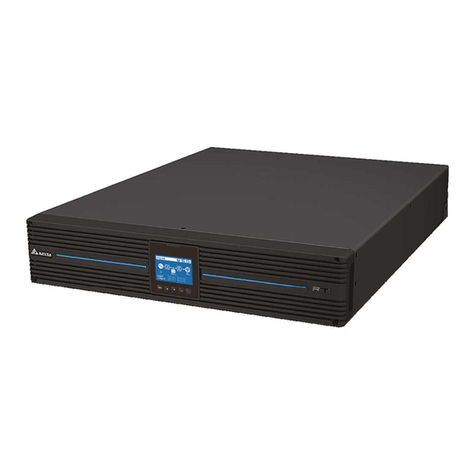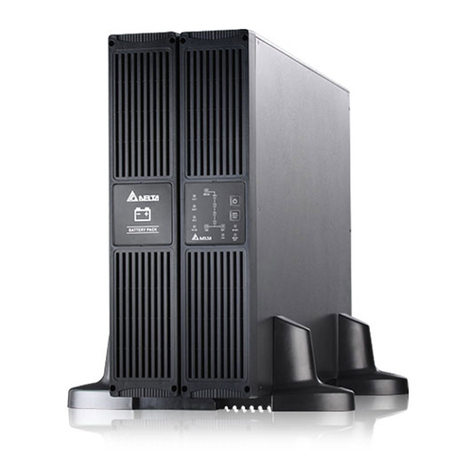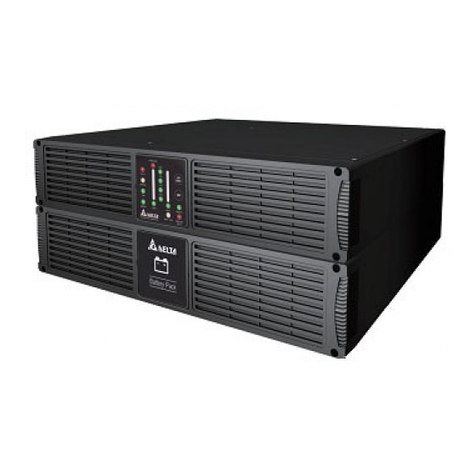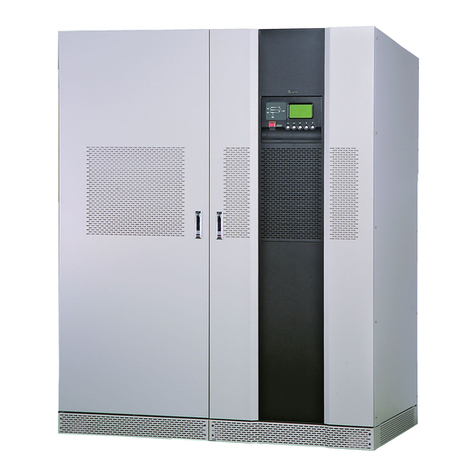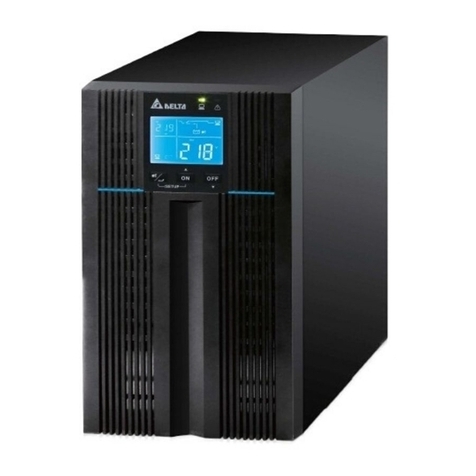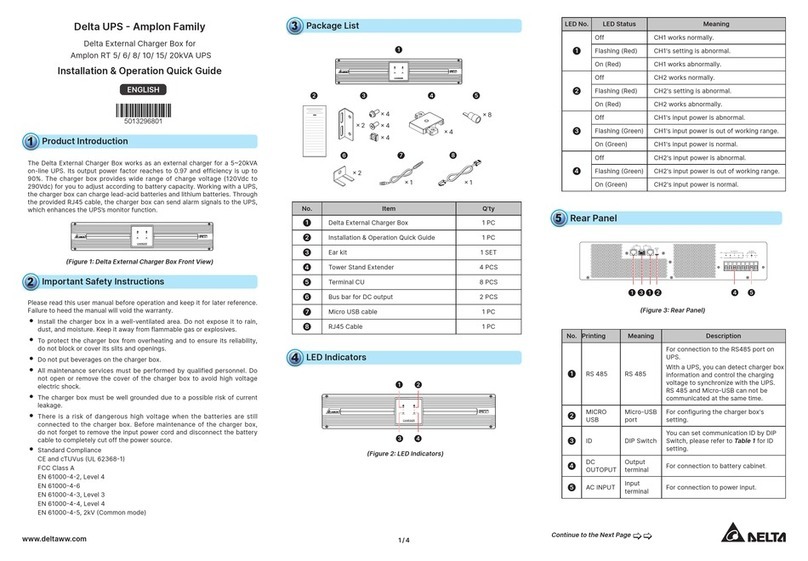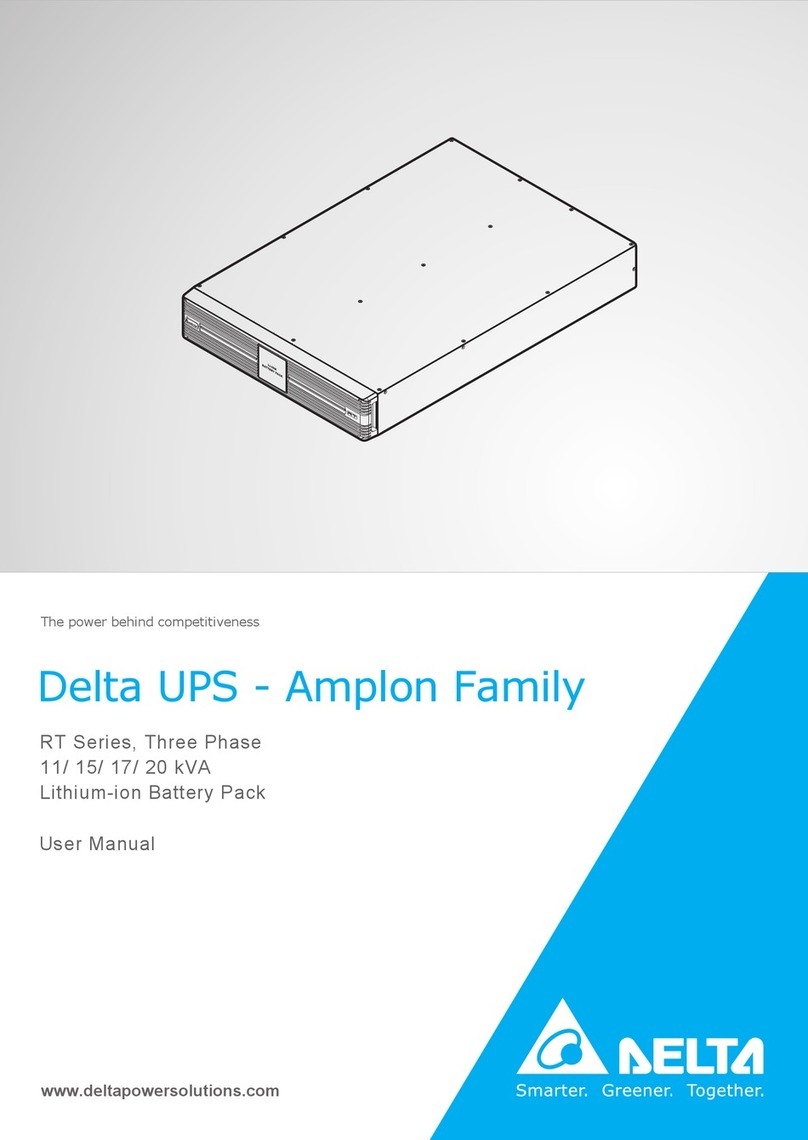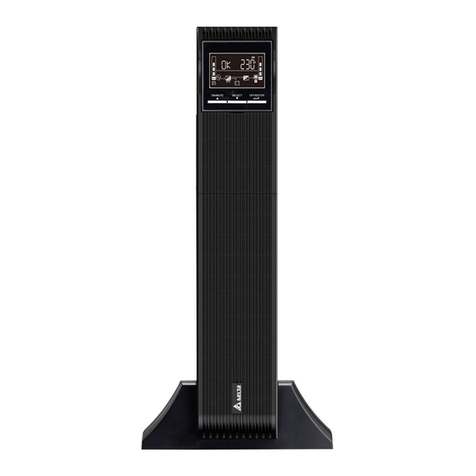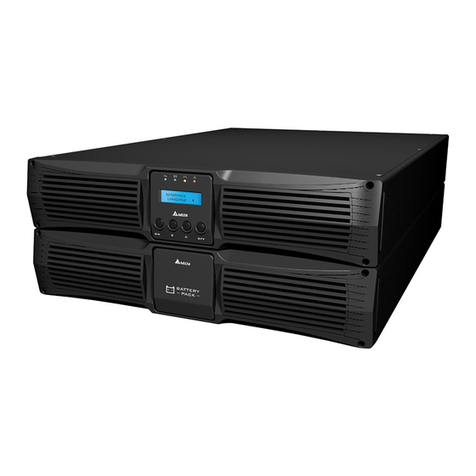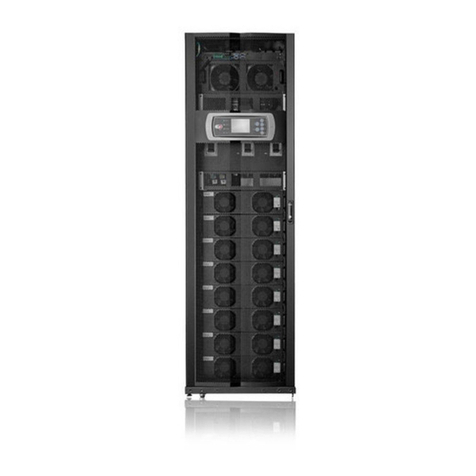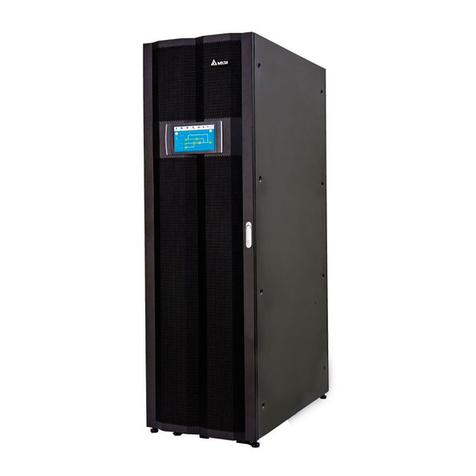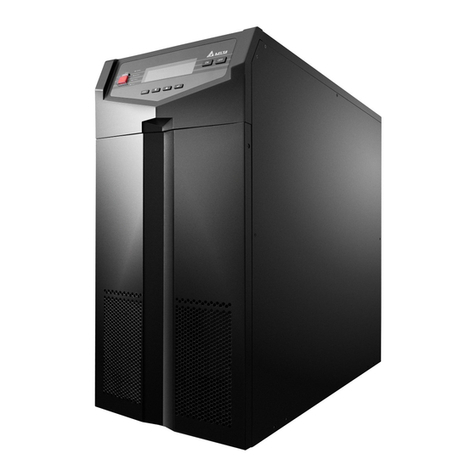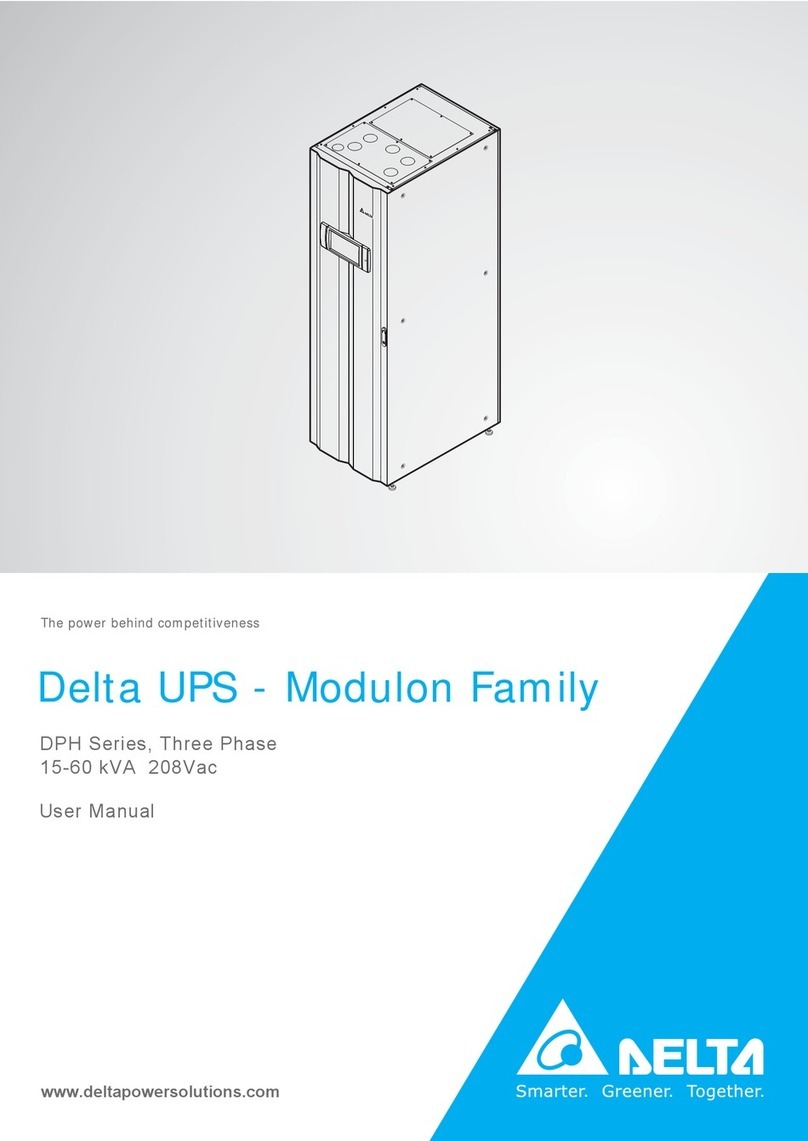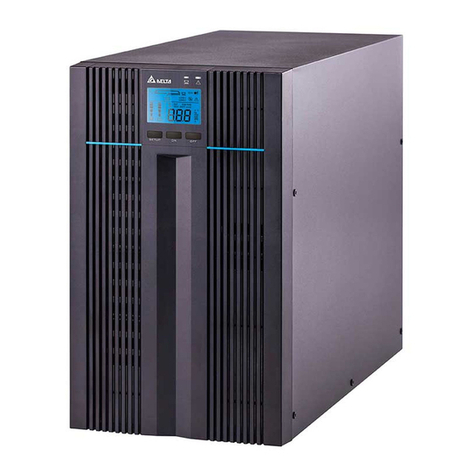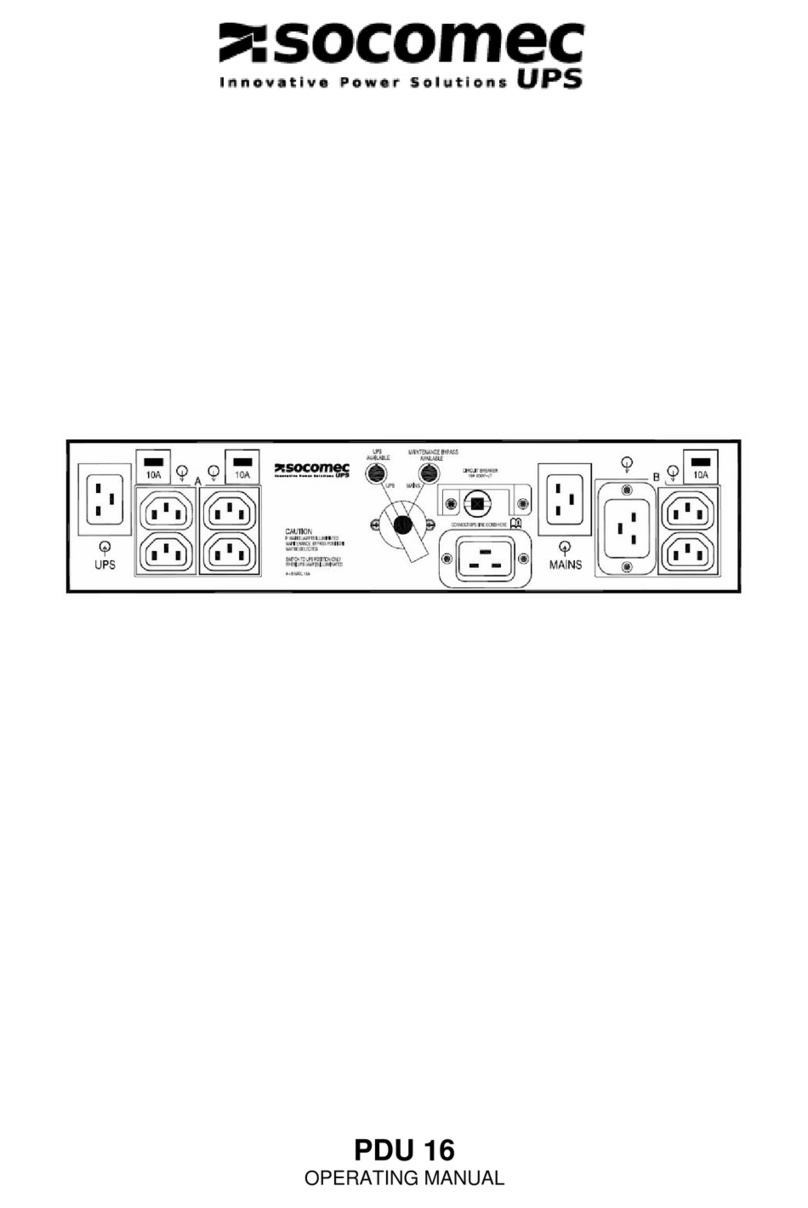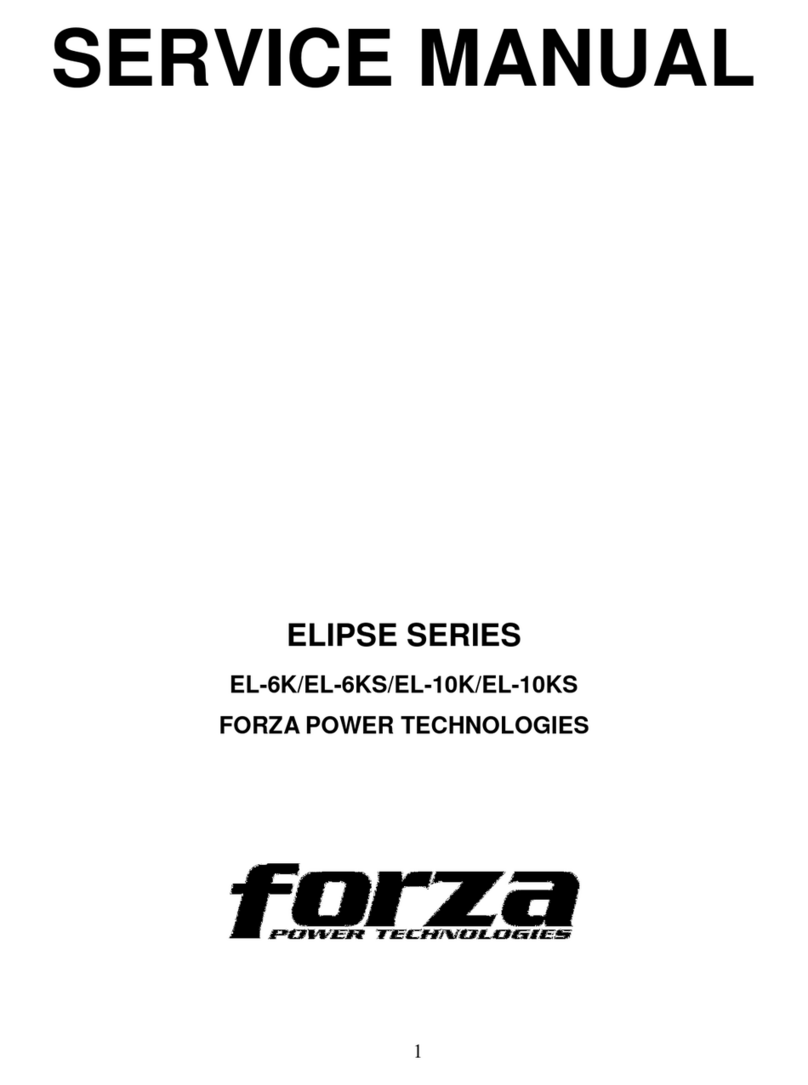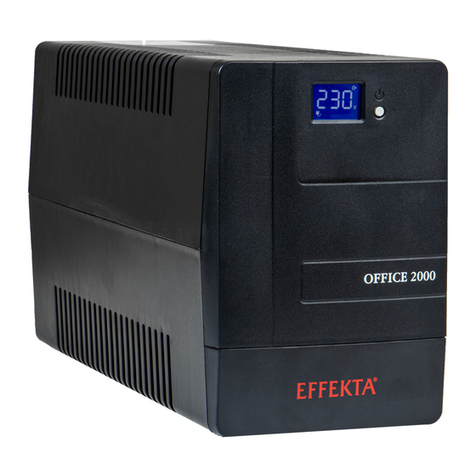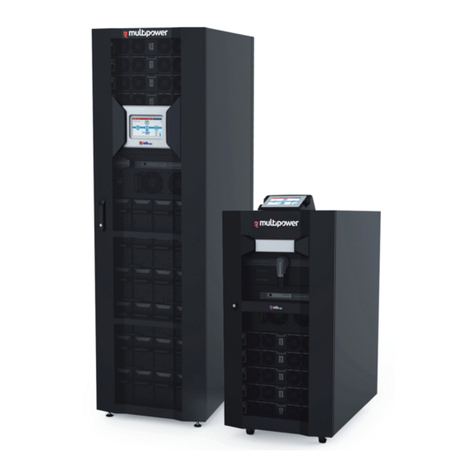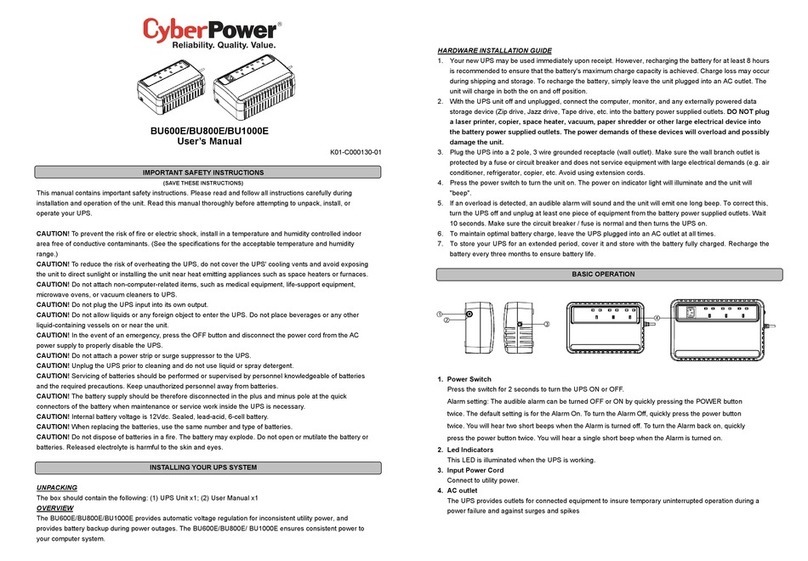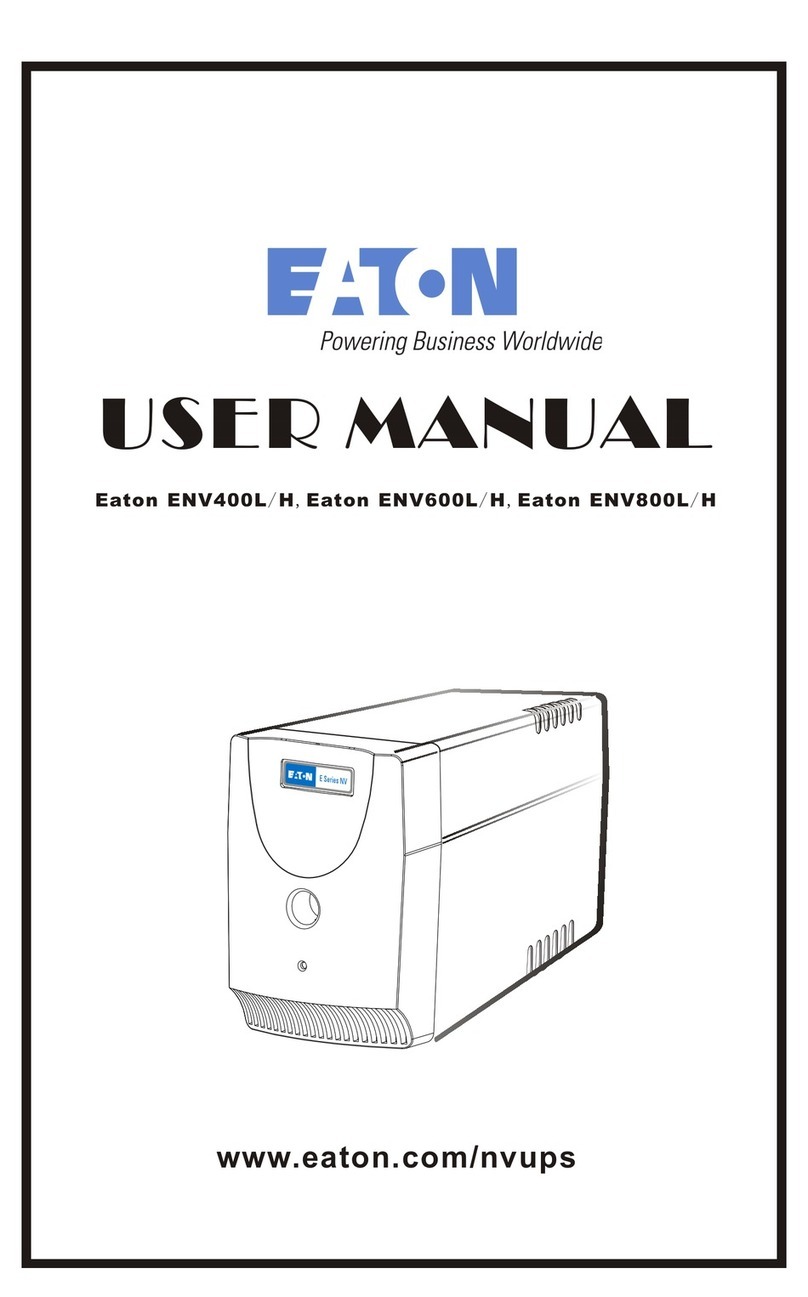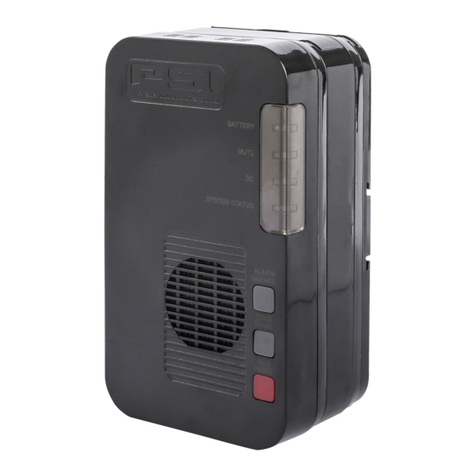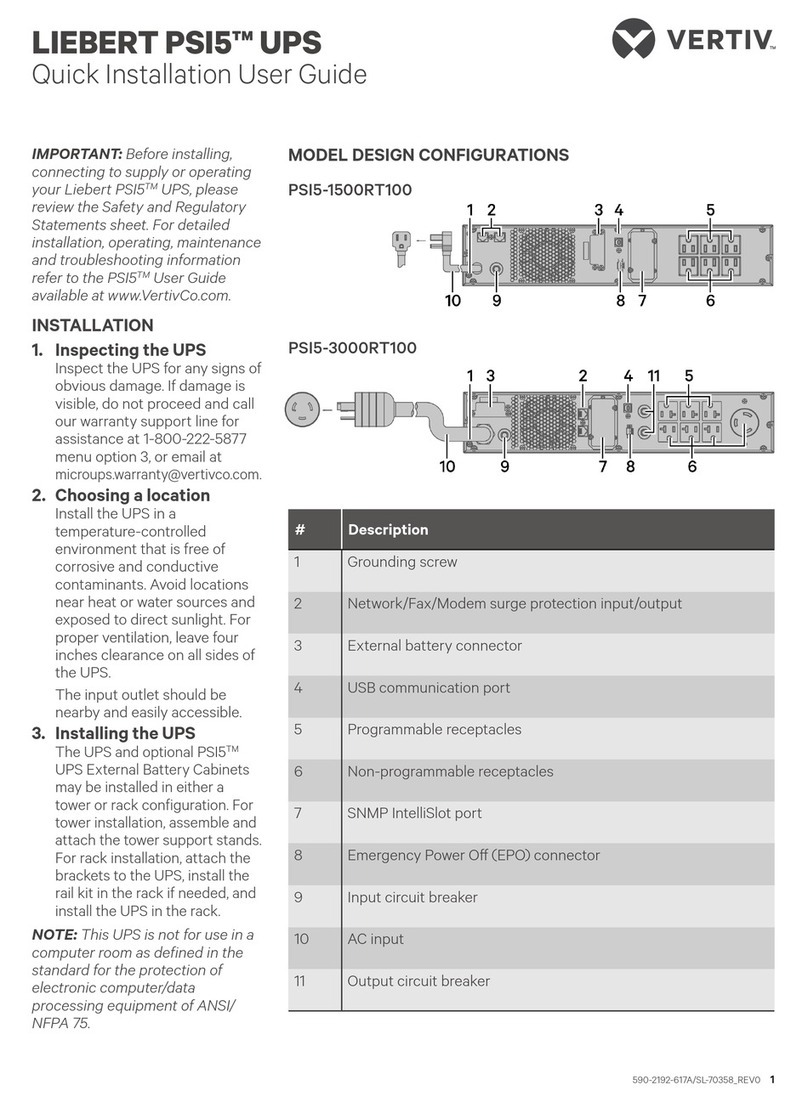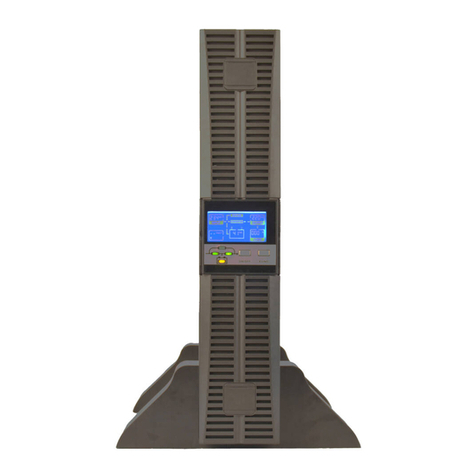
Chapter 1
2
zWhen installing the equipment, please ensure that the sum of the leakage
current of the UPS and the connected devices does not exceed 3.5mA.
zDo not disconnect the mains on the UPS system or the building wiring out-
let (shockproof socket outlet) during operations since this would cancel the
protective earthing of the UPS system and of all connected loads.
zThe UPS system features its own, internal current source (batteries). The
UPS output sockets or output terminals block may be electrically live even
if the UPS system is not connected to the building wiring outlet.
zIn order to fully disconnect the UPS system, first press the OFF/ ENTER
button to disconnect the mains.
zBefore usage, you must allow the UPS to adjust to room temperature for
at least one hour to ensure that there is no moisture condensing inside the
UPS.
zDo not pour and splash any liquid on the UPS. Do not insert any object into
the UPS’s slits and openings. Do not put beverages on or around the UPS.
zThe UPS system operates with hazardous voltages. Repairs may be carried
out only by qualified maintenance personnel.
Risk of electric shock. Even after the unit is disconnected from the
mains (building wiring outlet), components inside the UPS system are
still connected to the battery and electrically live and dangerous.
zBefore carrying out any kind of service and/ or maintenance, disconnect
the batteries and verify that no current is present and no hazardous volt-
age exists in the terminals of high capability capacitor such as BUS-capac-
itors.
zOnly qualified personnel can perform battery replacement. Unauthorized
personnel shall be kept away from the batteries.
Risk of electric shock. The battery circuit is not isolated from the input
voltage. Hazardous voltages may occur between the battery terminals
and the ground. Before touching, please verify that no voltage is
present!
zThe following precautions should be observed before battery replacement:




















